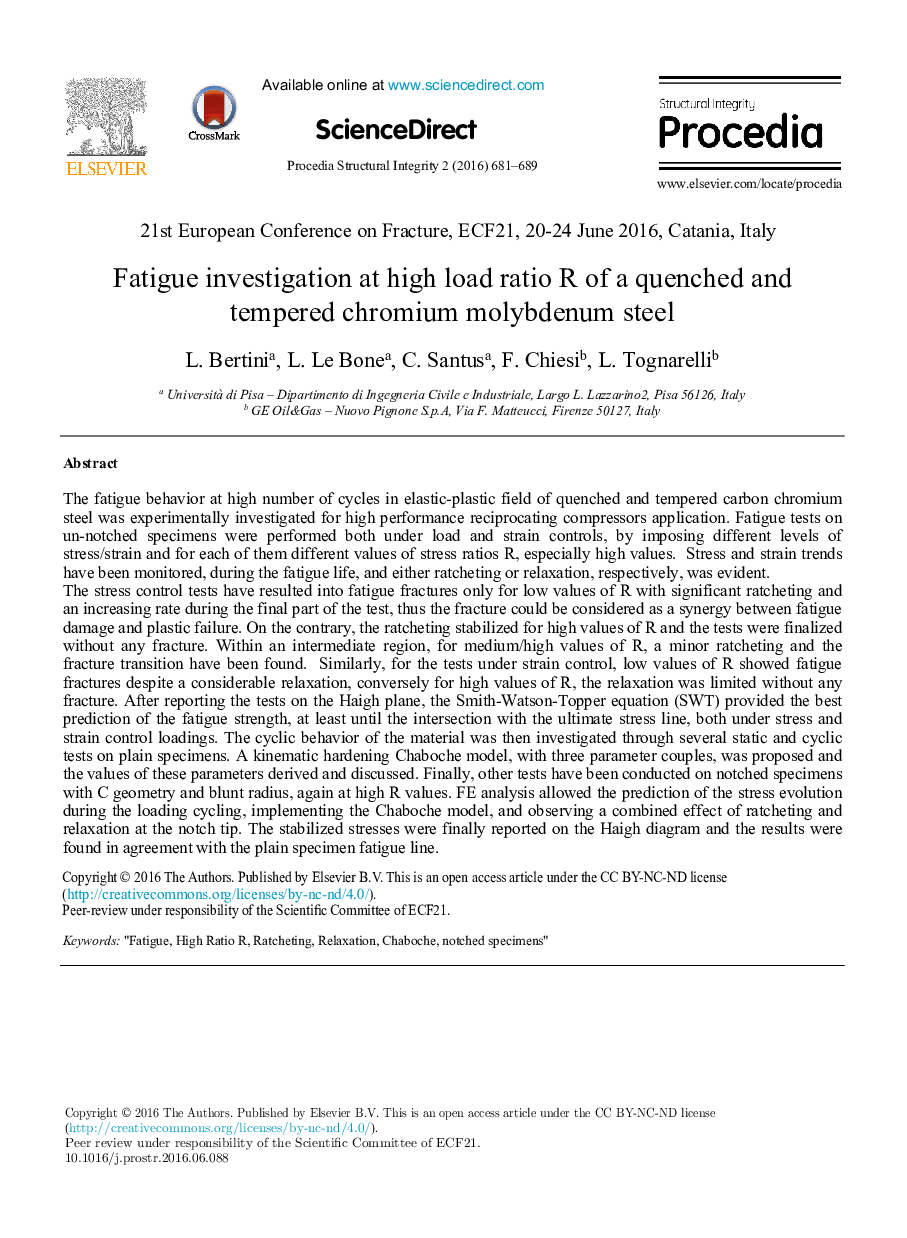| Article ID | Journal | Published Year | Pages | File Type |
|---|---|---|---|---|
| 1558729 | Procedia Structural Integrity | 2016 | 9 Pages |
Abstract
The stress control tests have resulted into fatigue fractures only for low values of R with significant ratcheting and an increasing rate during the final part of the test, thus the fracture could be considered as a synergy between fatigue damage and plastic failure. On the contrary, the ratcheting stabilized for high values of R and the tests were finalized without any fracture. Within an intermediate region, for medium/high values of R, a minor ratcheting and the fracture transition have been found. Similarly, for the tests under strain control, low values of R showed fatigue fractures despite a considerable relaxation, conversely for high values of R, the relaxation was limited without any fracture. After reporting the tests on the Haigh plane, the Smith-Watson-Topper equation (SWT) provided the best prediction of the fatigue strength, at least until the intersection with the ultimate stress line, both under stress and strain control loadings. The cyclic behavior of the material was then investigated through several static and cyclic tests on plain specimens. A kinematic hardening Chaboche model, with three parameter couples, was proposed and the values of these parameters derived and discussed. Finally, other tests have been conducted on notched specimens with C geometry and blunt radius, again at high R values. FE analysis allowed the prediction of the stress evolution during the loading cycling, implementing the Chaboche model, and observing a combined effect of ratcheting and relaxation at the notch tip. The stabilized stresses were finally reported on the Haigh diagram and the results were found in agreement with the plain specimen fatigue line.
Related Topics
Physical Sciences and Engineering
Materials Science
Materials Chemistry
Authors
L. Bertini, L. Le Bone, C. Santus, F. Chiesi, L. Tognarelli,
